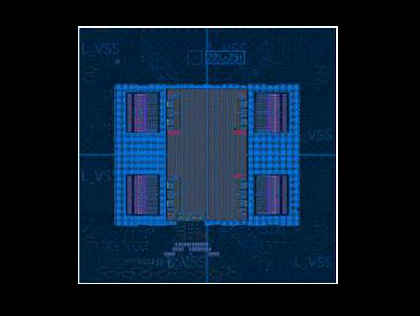2025-09-20 11:42:03
from my link log —
Pezy SC: Japan is still investing in custom floating point accelerators.
https://www.nextplatform.com/2025/09/04/why-is-japan-still-investing-in-custom-floating-point-accelerators/
saved 202…
2025-09-18 20:41:06
President Trump says negative coverage about him by TV networks should be grounds for the FCC to revoke broadcast licenses, and "it will be up to Brendan Carr" (Joey Garrison/USA Today)
https://www.usatoday.com/story/news/politi
2025-08-19 07:48:29
RRRA: Resampling and Reranking through a Retriever Adapter
Bongsu Kim
https://arxiv.org/abs/2508.11670 https://arxiv.org/pdf/2508.11670
2025-08-19 11:22:35
47's government being a menace to the whole world again. Tuberculosis in prisons means tuberculosis everywhere.
"Detainees have tested positive for tuberculosis at the Anchorage Correctional Complex in Alaska and Adelanto ICE Processing Center in California, according to news reports. ...
"Tuberculosis thrives in carceral settings of all kinds. It spreads through the air when an infected person coughs, sneezes, or spits, and it only takes a few droplets to sicken someone. ...
"Almost everyone who contracts it needs treatment to survive, and those who do may live with lungs so damaged they struggle to breathe. ...
"Anyone in ICE custody with symptoms suggestive of tuberculosis is supposed to be placed into an airborne infection isolation room with negative pressure ventilation ...
"But ICE detention facilities don’t necessarily have such rooms ... The typical solitary cell does not use negative pressure, detention and medical researchers said. ...
"Experts expect the situation to get much worse in the months ahead. That’s because Trump’s drive to deport one million people hasn’t yet coincided with the height of flu season, or the GOP’s recent cuts to the health care system, or its exclusion of undocumented immigrants from several social programs."
- Whitney Curry Wimbish, The American Prospect
#tuberculosis #USA #USPol
2025-08-14 19:28:00
Google SMS-App zensuriert Nacktbilder, aber nicht Videos
Android engagiert sich als persönlicher Zensor: Nacktbilder in Googles SMS-App Messages werden auf Wunsch verwischt.
https://www.
2025-09-19 16:41:57
2025-08-19 10:26:30
Negative drag force on beating flagellar-shaped bodies in active fluids
Timo Knippenberg, Robin Bebon, Thomas Speck, Clemens Bechinger
https://arxiv.org/abs/2508.13129 https://
2025-08-19 15:05:03
LINDNER IST ZURÜCK IM BUNDESTAG
https://mastodon.social/@queerde/115055635149098169
2025-08-19 08:21:00
On the Structure of Busemann Spaces with Non-Negative Curvature
Bang-Xian Han, Liming Yin
https://arxiv.org/abs/2508.12348 https://arxiv.org/pdf/2508.12348…
2025-09-17 13:30:53
🇺🇦 #NowPlaying on KEXP's #Early
Nightbus:
🎵 Angles Mortz
#Nightbus
https://nightbusuk.bandcamp.com/track/angles-mortz
https://open.spotify.com/track/4CFGeqMhzAPy48XAh0ttAm




